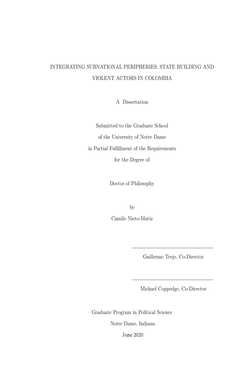By Kyle Johnson
Tumaco is a municipality in south-west Colombia, close to the border with Ecuador. The city, on Colombia’s Pacific coast, has become a vital hub for non-state armed groups, including transnational drug trafficking networks and former guerrillas, owing to its port and location. Several armed groups, including ex-FARC dissidents,1 have established a permanent presence in several low-income neighbourhoods, with significant consequences for the inhabitants and local governance. This case study examines criminal governance during the pandemic of three groups based in Tumaco: the Alfonso Cano Western Bloc (BOAC), the United Guerrillas of the Pacific (GUP) and the Contadores (Accountants). The BOAC actively adopted measures to respond to the pandemic, imposing curfews, restricting people’s movements and banning outsiders from entering areas under its control. Despite claims that it had yielded its role in governance issues to local community boards, the group continued to wield influence over the local population and provide services such as dispute resolution. By contrast, the GUP did not impose any pandemic-related restrictions, and some members expressed views that the virus was not real, directly contradicting the Colombian government’s stance. This resonated with many in Tumaco, who also believed the pandemic was not a serious threat. This lack of action may, however, also have been tied to leadership and discipline issues. The release of two prominent commanders from prison destabilized the group’s hierarchy, impacting governance patterns and gang organization. Members started to charge the community high prices for services such as dispute resolution, which the population could not afford, and were reported as being unpredictably violent. These two commanders then defected to the BOAC and the Contadores, along with their fighters. The Contadores then ‘inherited’ the GUP areas. Criminal governance also impacted people’s adherence to COVID-related restrictions. In the few areas where restrictions were imposed by crime groups, these rules were more widely respected than those imposed by the local or national governments, mainly due to the implied and sometimes explicit threats accompanying armed groups’ regulation and the authorities’ inability to enforce restrictions.
Geneva: Global Initiative Against Transnational Organized Crime, 2021. 18p.





